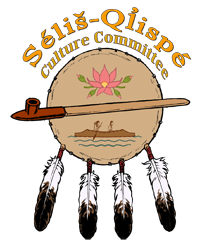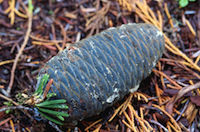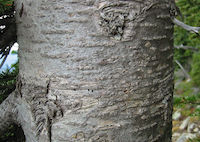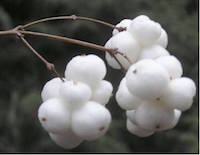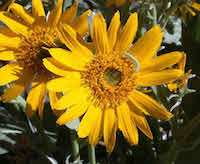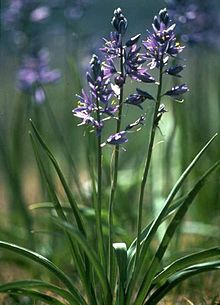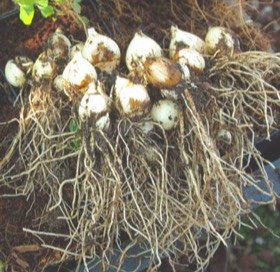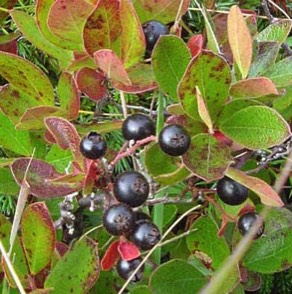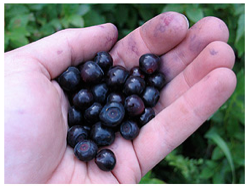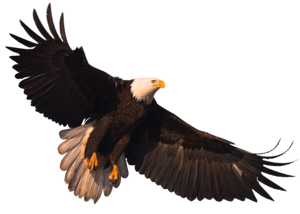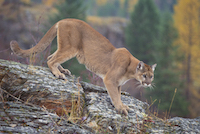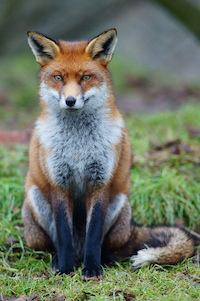- History
- Ethnogeography
- Culture
- Documents
Tab 1
For over a decade, the Culture Committee has been working toward completion of four major books on tribal history and culture from the perspective of tribal people. All draw primarily from our recorded oral histories told in the Salish language by tribal elders. In each of the books, the elders’ direct words -- printed in a bilingual, Salish-English format -- are combined with records from the National Archives and many other public repositories, and illustrated with images from numerous photographic collections, including the SPCC Photo Archives. All books are painstakingly reviewed by the Salish-Pend d'Oreille Elders Cultural Advisory Council to ensure accuracy and appropriate content. The result is a series of books providing an in-depth examination of tribal history from the perspective of tribal people, voices that have been virtually absent from the historical record… until now. Our work on these books over the past decade has been supported by both the Confederated Salish and Kootenai Tribes and by major grants from the Montana Committee for the Humanities, the National Historical Publications and Records Commission, the Mission Valley Community Foundation, the Dennis and Phyllis Washington Foundation, the Plum Creek Foundation, American Public Lands Exchange Company, and others.
- 1908 Swan Valley Massacre[+]According to the 1855 treaty, the confederated tribes retained the right to hunt, gather, and fish in their aboriginal territory, some of which was outside the reservation boundaries. This practice came into conflict with the state law after Montana acquired statehood in 1889. It established its own hunting and fishing regulations to be enforced by game wardens. Only the federal government had jurisdiction within reservation borders, but in other parts of the state, officials believed they had authority to regulate Native Americans as well as non-Native Americans.
In September 1908 a party of eight Pend d’Oreilles entered the ancient hunting grounds of the Swan Valley on the eastern side of the Mission Mountain range. The party members included Atwen Scwi, his wife, son, and daughter; Little Camille Paul and his wife who was pregnant; and two elders, Mary and her husband Martin Yellow Mountain. Before they had left the reservation, they purchased state hunting permits to avoid trouble, although this was not required under the Hellgate Treaty. (Yellow Mountain cleared permission for the expedition from the agent in Arlee).
In October, after they had camped for several weeks, Charles Peyton, a state game warden, together with a few deputized residents of the valley, entered the encampment three times to investigate the hunting party. He demanded hunting licenses and harassed the band. Peyton returned the next day with guns drawn, and demanded that the Pend d'Oreilles leave by the next morning. To avoid confrontation, the band decided to move and began to pack up the camp.
The next day, before they could pack and mount their horses to leave Peyton arrived along with his deputy firing his gun.
He shot Camille Paul and Atwen, the two leaders of the party, who were unable to reach their guns. When Yellow Mountain tried to reach his weapon, Peyton shot him as well. As the women fled toward the edge of the clearing, Peyton chased them. Atwen’s son Peh-lah-so-weh found a gun and shot Peyton, hitting him in the stomach. The warden’s deputy Herman Rudolph shot Peh-lah-so-weh at the same time, killing him almost instantly.
As the women tended to the dead and dying members of the party, Peyton began to get back up. Camille’s wife, Clarice, fearful that Peyton would try to kill the rest of them, pulled her husband's rifle from under his body and shot twice at Peyton, leaving him dead.
Six months pregnant, Clarice rode to another Pend d’Oreilles camp to seek help. When she arrived, the band of Many Names (Louie Mollman) took her in and tended to her. When Many Names’ party returned the next day to recover the bodies, they encountered a non-Indian posse. Many Names warriors restrained from attack. - Salish Removal to the Jocko Valley[+]In the Hellgate Treaty of 1855, Xʷełx̣ƛ̓cin (Plenty Horses or Chief Victor) and the Salish people insisted on staying in their homeland, the Bitterroot Valley. The treaty guaranteed the Bitterroot for them unless the President decided, on the basis of a survey, that the Flathead Reservation was "better adapted to the wants of the Flathead Tribe." Although the required survey was never conducted, President Ulysses S. Grant declared in 1871 that the Salish had to be "removed" to the Reservation. By this time, Słmx̣e Q̓ʷox̣qeys (Claw of the Small Grizzly, or Chief Charlot) had succeeded his father, Xʷełx̣ƛ̓cin, as Head Chief, but he stuck to Xʷełx̣ƛ̓cin's position of peacefully resisting removal from the Bitterroot. So when the U.S. sent officials to Montana in 1872, Słmx̣e Q̓ʷox̣qeys said this was where the bones of his ancestors were buried, and he would not leave. Congress never knew of the Chief's refusal to sign, however, because the negotiator, future U.S. President James Garfield, forged the "x" mark of Słmx̣e Q̓ʷox̣qeys onto the agreement. Non-Indians called Słmx̣e Q̓ʷox̣qeys a treaty breaker until this outrageous forgery was proven to be true by Senator G.G. Vest in 1883.
However, two sub-chiefs, Arlee and Ninepipes, decided it would be best to move. They left the Bitterroot Valley in 1873, accompanied by a few families, and moved to the Jocko. The U.S. treated Arlee as Head Chief, giving him a house and a small stipend, which only deepened the anger and distrust of Słmx̣e Q̓ʷox̣qeys toward the Government. Then the Northern Pacific Railroad was constructed thru the Reservation in 1883, they named the depot in the Jocko "Arlee," and this remained the name of the town, which got its first post office in 1901.
The majority of the Salish, meanwhile stayed in their ancestral Bitterroot Valley under the leadership of Słmx̣e Q̓ʷox̣qeys. White settlers began to crowed in around them, even though these incursions were not allowed by the terms of the Treaty. As a result, the tribe became more poor. Nevertheless, when Chief Joseph's band of Nez Perce came through the valley during the 1877 war, the Salish refused to join their long-time friends and relations, and instead defended the settlements. Despite this, non-Indians and the Government only increased pressures on the Salish to leave the Bitterroot, which was considered some of the best agricultural land in Montana. Słmx̣e Q̓ʷox̣qeys repeatedly refused to move.
After the Missoula & Bitterroot Valley Railroad was built in 1888, white settlement began to increase more rapidly, and in November 1889, faced with worsening conditions for his people, Chief Charlot finally agreed to move. He secured guarantees of housing and other material help for the people once the relocated to the Reservation. Told that they would be moving right away, the Salish did not plant props in the spring of 1890. Congress appropriated no funds for the removal, so the people remained in the valley--but now without the food they would have normally raised. The same ting happened the next year, as Congress continued its patrons malign neglect. Throughout 1890 and 1891 Salish people sold their stoves and other house hold belongings in their struggle to get enough to eat. Finally in october 1891, General Henry B. Carrington and a contingent of troops from Fort Missoula roughly uprooted the people from Stevensville area and marched them north to the Reservation.
Many elders, including Sophie Moiese and Mary Ann Combs have related the sadness of the journey and the rough way people were treated by troops. One woman, Mrs. Lumpry, fell off her horse and broke her hip, and was crippled for life. Mrs Combs recalled that after the two day journey, the people camped near Evaro called Nłesletkʷ (Two Creeks). The people pulled them selves together, and led by young men riding out ahead on their horses, the Salish came into the Jocko Valley. A large group of Pend d'orville and other tripbal people awaited them at the Jocko church, and welcomed them to the Reservation. It is said the Salish settled at the southern end of the Reservation because they did not wish to move any further north than they had to. So the homes of Słmx̣e Q̓ʷox̣qeys, Sam Resurrection, Sophie Moiese, the Vanderburgs and many others were spread between Snłiʔoyčn (Evaro), Snłaʔcná (Schley), Nłqá (Arlee) and łqʷqʷʔú (Valley Creek). Some Salish families, notably the Pierres, moved back to the Bitterroot after 1891.
Despite the pain and loss of removal, the Salish quickly rebutlt their lives on the Reservation, establishing many successful family farming and cattle operations. They did this even thou the Government reneged on many of its promises of help.
Ten years after the removal the Salish and the Governments solemn promise that the Reservation would always be a protected home for the people, free from harassment, congress passed the law that would open the Flathead Reservation to white settlement. Tribal members, including Chief Charlot and Sam Resurrection, repeatedly protested this law, but to no avail. In 1910, the homesteaders poured in to the Reservation, taking much of the best land. The Flathead Irrigation Project was built, often over pre existing Indian built ditches, and suddenly Tribal farmers had to pay for water they had always used for free. Many small operation had produced food only for subsistence needs, and families couldn't pay these new fees. Many Tribal allotments were sold to non- Indians before the Allotment Act was cancelled in 1934.
The salish survived all this, and Arelee today is the home to a vibrant Salish community. Salish homes are found throughout the area. In the arlee schools, Salish language classes have been taught for many years now to the many Salish students. The Vanberberg Culture Camp at Valley Creek was founded by Agnes Vanderburg in 1974 and run by her until her death in 1989. Th camp is now run by her daughter Lucy and son Victor, and was opened to all interested people from June thru August for hunting, fishing, camping, solitude and gathering of foods and medicines. - Dixon[+]cłsusuw̓e (Black Lake) flows through to Jocko River which flows to meet with the Flathead River in Dixon. Tribal elders Mike Durgelouh sr., John Peter Paul and Noel Pichette talked about the nšiy̓e (little river), ntx̣ʷe (big river) meeting in Dixon thats why its called sčili or sčilip. There is also a story about čt̓et̓ʔu(wild plums) growing along Flathead River in Dixon, below the town. Mike Durgeloh says the plums used to grow where the old bridge used to be.
John Peter Paul says there are little čmtus(green plums), you pick before they are ripe like you do tomatoes and they eventually ripened on their own. John remembers his mother, Clarice Paul, and their family, and picking wild plums for a couple days.
After the Northern Pacific Railroad was built through the Reservation over the objections of tribal leaders in 1883, a depot was built at this place, and it was known as Jocko City. In 1904 it was renamed Dixon after Rep. Joseph Dixon, a Missoula Republican who that same year had pushed the Flathead Allotment Act through Congress. The Act required the Government to break up tribally owned land by drawing up an official roll of tribal members and assigning separated tracts of land to heads of families and other individuals. Any land leftover would be declared as surplus by the government and thrown open to white settlement. Tribal members and Chiefs including: Chief Charlot, Chief Qeyqeyši, and Sam Resurrection, briefly protested the Actas an outrageous breaking of the Hellgate Treaty of 1855, and many subsequent promises (the Garfield Agreement of 1872, the Railroad Agreement of 1882 and the Removal of Salish in 1891). All of which agreements guaranteed that the Reservation would be for the exclusive use and benefit of the Confederated Salish and Kootenai Trabes. Dixon, prodded on by business interests in Missoula,pushed the bill through without getting the tribal approval. In 1908, he also pushed through a measure to establish the Flathead Irrigation Project, who's principal purpose was supposed to be the benefits the Tribes. However, most irrigated lands quickly fell into non indian ownership control after the Reservation was finally opened in 1910. Dixon went to serve as national manager Teddy Roosevelt's, unsuccessful "Bull Moose" campaign in 1912, and later was elected Governor of Montana. - Warriors and Tribal Leadership[+]In our traditional way of life, we were led by chiefs, who were selected by our leaders and elders. Each tribe had a head chief, a sub-chief, and several small chiefs to handle matters of importance. If the tribe divided, the head chief took charge of one group and the sub chief took charge of the other. The small chiefs regulate the welfare of the camp, the safety and comfort of the people, and proper conduct regarding camping, firewood, horse heard, scouting, hunting and guards. Leadership was chosen not on the basis of wealth, but accrding to a warrior's deeds of courage and leadership on behalf of the people. The hunt for buffalo and welfare with the Plains tribes, especially in the 19th century, made life very hazardous for the Salish and Pend d' Oreille, and it increased the leadership role of our warriors. The tribes we fought against regarded Salish and Pend d' Oreille warriors as some of their most formidable opponents. According to stories told by Pete Beayerhead, the counting of coup was a high war honor for the Salish and Pend d' Oreille men, and this, along with other factors, determined the selection of chiefs.
Tab 2
Coming Soon!
Tab 3
Traditional tribal cultural events and activities
The Culture Committee conducts cultural and ceremonial activities, feasts, pilgrimages, and dances at appropriate times of year. This includes the New Year’s Jump Dances, the bi-annual trips to the Medicine Tree, the Bitterroot Feast, and the Christmas dinners. Other events are held in addition to these, as well as field trips with elders and other tribal members to important places in Salish-Pend d'Oreille aboriginal territories.
We continue to gather, prepare, and store traditional plant foods.. These are kept at the Longhouse for use in tribal feasts and other special occasions, and for the benefit of elders. We also gather and dry traditional medicinal plants for the personal use of traditional elders, and other traditional materials as needed for various cultural uses.
The Culture Committee conducts cultural and ceremonial activities, feasts, pilgrimages, and dances at appropriate times of year. This includes the New Year’s Jump Dances, the bi-annual trips to the Medicine Tree, the Bitterroot Feast, and the Christmas dinners. Other events are held in addition to these, as well as field trips with elders and other tribal members to important places in Salish-Pend d'Oreille aboriginal territories.
We continue to gather, prepare, and store traditional plant foods.. These are kept at the Longhouse for use in tribal feasts and other special occasions, and for the benefit of elders. We also gather and dry traditional medicinal plants for the personal use of traditional elders, and other traditional materials as needed for various cultural uses.
Elders Meetings
The Culture Committee’s work is based on maintaining close relationships and consultation with the members of the Salish-Pend d'Oreille Elders Cultural Advisory Council and other elders. We meet with the Elders Council monthly from October through June, and in other meetings scheduled when the need arises. In many of these meetings, representatives of other Tribal departments and programs, as well as non-tribal officials, businesses, and private individuals present issues, projects, and proposals to the Elders for their review, comment, and evaluation. The Culture Committee also meets regularly with the elders on an individual basis to consult with them on any matters that may arise. The Culture Committee carries out its duties and tasks based on these meetings and on the needs of our tribal people.
The Culture Committee’s work is based on maintaining close relationships and consultation with the members of the Salish-Pend d'Oreille Elders Cultural Advisory Council and other elders. We meet with the Elders Council monthly from October through June, and in other meetings scheduled when the need arises. In many of these meetings, representatives of other Tribal departments and programs, as well as non-tribal officials, businesses, and private individuals present issues, projects, and proposals to the Elders for their review, comment, and evaluation. The Culture Committee also meets regularly with the elders on an individual basis to consult with them on any matters that may arise. The Culture Committee carries out its duties and tasks based on these meetings and on the needs of our tribal people.
December
Esʔacm̓í Spq̓ni (Trapping Month)
This is the time of the year when Salish and Pend d' Oreille did the trapping. Some time ago, we trapped martin, weasel, mink, otter, beaver and muskrat. We use the skins of these animals in different ways - braid wraps, trimming for outfits among other uses. Today, these animals are not in as much of abundance as they once were long ago and are now trapped and carefully used.
November
Sqʷlllú Spq̓niʔ (Story Telling)
Story telling begins after the first snowfall. This is a time of year when the Salish people relax from the Summer and early Fall harvesting seasons. Stories are told by parents and grandparents to the younger generations. The children are encouraged to sit quietly and listen with thoughts of their own about being part of the stories. The stories teach and tell of values and morals. From these stories we can still today see landmarks that tell us of the creation of mankind. From these stories, we learn how mankind came to be. In early spring the stories are put away and are not to be told until snowfall again in the winter season.
October
Sčłip Spq̓niʔ (Hunting Month)
A hunting party of young men would go up into hunting grounds. A leader would appoint two scouts to make a corral. The leader would give the directions and calls to let them know when to be ready and when to make moves. This way they would not waste any ammunition and you will have enough for another hunt. The animals were chased into the corral and only what was needed was taken. After the men killed enough meat for the camp they would then take all the meat back to camp. The women would slice and dry the meat and divide it equally among all the camps. They would pack their meat in their hunting packs and start for home.
September
łx̣łó Spq̓ni (Month of the Chokecherry)
The chokecherry is a dark red or black berry grown on tall bushes. It is one of the foods the Salish - Pend d' Oreille people picked for their winter supply.
This is also the month for wild grapes. After it is picked it may be eaten fresh or mashed for drying. Elderberries were also picked during this month. September is usually the month our people gathered the last of the berries for the winter supplies.
August
St̓šá Spq̓ni (Month of the Huckleberry)
The huckleberries ripen in the month of August and some as early as late July. The St̓šałq grew in abundance years ago. If they are plentiful, we would pick enough to last all winter and spring.
Our people use cedar bark baskets made earlier in the year for holding the berries. The baskets are light-weight and easy to carry. Berries never get crushed in these baskets. Other berries that are also ripe at this time are foam berries (Indian Ice Cream Berries), thimbleberries, and raspberries. As we still do today, through out the entire month of August we are picking and gathering the berries.
July
Es ya̓pqéyn̓i Spq̓niʔ(Celebration Month)
This is the middle of the summer months when all the people get together to celebrate and give thanks that they survived the wars and the long hard winter. The people donate in many ways to celebrate at this time of year. Each day several Indian leaders would gather at the Chiefs tipi to discuss the activities for that day. After they had it all planned, the camp crier would ride among the encampment to announce each activity. The annual Arlee Celebration is usually the first weekend of this month.
June
Sx̣ʷeʔlí Spq̓niʔ (Month Of Camas)
This is usually the month when the Camas is ready to dig. The Camas is baked in the ground for three days with black tree moss. During this month the Salish People make bark baskets for berry picking. The bark is taken from Lodge pole and Cedar trees. We are always careful not to take too much off one tree so it won’t kill the tree. Tipi poles are cut during this month as well, they peel easier. When the wild-rose blossoms our people know that the buffalo are nice and fat. When the strawberries were ripe, the baby elk and deer were born.
May
Sp̓eƛ̓m Spq̓niʔ (Bitterroot Month)
When it was time to dig bitterroot, the Chief would select a group women to go ahead and test the root to see if it was ready. If it peeled easily, then it was ready. Before any bitterroot was dug, a ceremony had to be conducted. This ceremony was done to ask that the bitterroots and all plants for food or medicine be abundant and healthful. A feast of roots was collected by an appointed group. Following the ceremony, everyone is then free to dig all that they need.
People were asked not to dig any bitterroots before the ceremony. If it was dug before the ceremony, it caused the roots to be extra bitter and scarce. Sp̓eƛ̓m was always carefully peeled, cleaned and dried throughly before storing. The indian people sometimes traded bitterroot with other tribes for different types of food that were not found here.
April
Sčyál̓mn spq̓niʔ (The Month of the Buttercup)
This is the Spring(sqepc) month. The first thunder is heard this month. All the bears, snakes, gophers and other hibernating animals come out. Snč̓lé stories are no longer told, they have been put away until the next snow fall.
This is also the month when the sčyál̓mn (buttercup), q̓awxeʔ (yellow bells) and słt̓it̓ič̓i (little dog, pussy willows) are in bloom. The Indian people used the sčyál̓mn as medicine. The qawxeʔ was used as a fruit. It would be mixed with spéƛ̓m (bitterroot).
March
k̓ʷsixʷ spq̓niʔ (The Month of The Geese)
When the geese were spotted flying in from the south that was a good sign that the winter months were coming to an end. It was time to look ahead to warmer weather. During the first part of the month, some of the people would go to certain lakes to snag, and trap fish. The people would be preparing for their hunting trips, berry picking and root digging. This is also when ƛ̓čƛ̓a (Blackbirds) would be arriving.
February
Čqʷosqn Spq̓niʔ (Coldest Month)
This is the month that our people regarded as the coldest month of the year. They called it čqʷosqn because it meant it was very very cold. The weather was often below zero during this month and the snow deep. This month was a long hard time for the Indian people.
January
Sčn̓čłtu Spq̓niʔ (The Hand Shaking Month)
Long ago, before the coming of the Black Robes and the trappers, our people, the Pend d' Oreille and Salish, would gather together for the mid-winter ceremonies. In these gatherings, they would sing what is called a hand shaking song.
The second name for January came about through the influences of the trappers and traders. During this time the people would gather together and shoot off their rifles and guns at midnight to welcome the New Year. After they shot off their rifles and guns, they would go back inside and sing the hand shaking song. After the song was sung, the people would have a small meal and head off to bed.
On New Year's Day, people gather at different homes for a day of feasts and fun. After the meal, we would drum and sing and dance. Then we have the Jump Dance. After this is all over, someone would stand up say where we’ll all be gathering for the next day, (at somebody else's home) to continue the Jump Dance. The Jump Dance continues for four days usually. Today, we have the Jump Dance here at the Long House. It is a time of giving thanks in prayers and thought. It is a time of renewal for the people and their families for the coming year.
Esʔacm̓í Spq̓ni (Trapping Month)
This is the time of the year when Salish and Pend d' Oreille did the trapping. Some time ago, we trapped martin, weasel, mink, otter, beaver and muskrat. We use the skins of these animals in different ways - braid wraps, trimming for outfits among other uses. Today, these animals are not in as much of abundance as they once were long ago and are now trapped and carefully used.
November
Sqʷlllú Spq̓niʔ (Story Telling)
Story telling begins after the first snowfall. This is a time of year when the Salish people relax from the Summer and early Fall harvesting seasons. Stories are told by parents and grandparents to the younger generations. The children are encouraged to sit quietly and listen with thoughts of their own about being part of the stories. The stories teach and tell of values and morals. From these stories we can still today see landmarks that tell us of the creation of mankind. From these stories, we learn how mankind came to be. In early spring the stories are put away and are not to be told until snowfall again in the winter season.
October
Sčłip Spq̓niʔ (Hunting Month)
A hunting party of young men would go up into hunting grounds. A leader would appoint two scouts to make a corral. The leader would give the directions and calls to let them know when to be ready and when to make moves. This way they would not waste any ammunition and you will have enough for another hunt. The animals were chased into the corral and only what was needed was taken. After the men killed enough meat for the camp they would then take all the meat back to camp. The women would slice and dry the meat and divide it equally among all the camps. They would pack their meat in their hunting packs and start for home.
September
łx̣łó Spq̓ni (Month of the Chokecherry)
The chokecherry is a dark red or black berry grown on tall bushes. It is one of the foods the Salish - Pend d' Oreille people picked for their winter supply.
This is also the month for wild grapes. After it is picked it may be eaten fresh or mashed for drying. Elderberries were also picked during this month. September is usually the month our people gathered the last of the berries for the winter supplies.
August
St̓šá Spq̓ni (Month of the Huckleberry)
The huckleberries ripen in the month of August and some as early as late July. The St̓šałq grew in abundance years ago. If they are plentiful, we would pick enough to last all winter and spring.
Our people use cedar bark baskets made earlier in the year for holding the berries. The baskets are light-weight and easy to carry. Berries never get crushed in these baskets. Other berries that are also ripe at this time are foam berries (Indian Ice Cream Berries), thimbleberries, and raspberries. As we still do today, through out the entire month of August we are picking and gathering the berries.
July
Es ya̓pqéyn̓i Spq̓niʔ(Celebration Month)
This is the middle of the summer months when all the people get together to celebrate and give thanks that they survived the wars and the long hard winter. The people donate in many ways to celebrate at this time of year. Each day several Indian leaders would gather at the Chiefs tipi to discuss the activities for that day. After they had it all planned, the camp crier would ride among the encampment to announce each activity. The annual Arlee Celebration is usually the first weekend of this month.
June
Sx̣ʷeʔlí Spq̓niʔ (Month Of Camas)
This is usually the month when the Camas is ready to dig. The Camas is baked in the ground for three days with black tree moss. During this month the Salish People make bark baskets for berry picking. The bark is taken from Lodge pole and Cedar trees. We are always careful not to take too much off one tree so it won’t kill the tree. Tipi poles are cut during this month as well, they peel easier. When the wild-rose blossoms our people know that the buffalo are nice and fat. When the strawberries were ripe, the baby elk and deer were born.
May
Sp̓eƛ̓m Spq̓niʔ (Bitterroot Month)
When it was time to dig bitterroot, the Chief would select a group women to go ahead and test the root to see if it was ready. If it peeled easily, then it was ready. Before any bitterroot was dug, a ceremony had to be conducted. This ceremony was done to ask that the bitterroots and all plants for food or medicine be abundant and healthful. A feast of roots was collected by an appointed group. Following the ceremony, everyone is then free to dig all that they need.
People were asked not to dig any bitterroots before the ceremony. If it was dug before the ceremony, it caused the roots to be extra bitter and scarce. Sp̓eƛ̓m was always carefully peeled, cleaned and dried throughly before storing. The indian people sometimes traded bitterroot with other tribes for different types of food that were not found here.
April
Sčyál̓mn spq̓niʔ (The Month of the Buttercup)
This is the Spring(sqepc) month. The first thunder is heard this month. All the bears, snakes, gophers and other hibernating animals come out. Snč̓lé stories are no longer told, they have been put away until the next snow fall.
This is also the month when the sčyál̓mn (buttercup), q̓awxeʔ (yellow bells) and słt̓it̓ič̓i (little dog, pussy willows) are in bloom. The Indian people used the sčyál̓mn as medicine. The qawxeʔ was used as a fruit. It would be mixed with spéƛ̓m (bitterroot).
March
k̓ʷsixʷ spq̓niʔ (The Month of The Geese)
When the geese were spotted flying in from the south that was a good sign that the winter months were coming to an end. It was time to look ahead to warmer weather. During the first part of the month, some of the people would go to certain lakes to snag, and trap fish. The people would be preparing for their hunting trips, berry picking and root digging. This is also when ƛ̓čƛ̓a (Blackbirds) would be arriving.
February
Čqʷosqn Spq̓niʔ (Coldest Month)
This is the month that our people regarded as the coldest month of the year. They called it čqʷosqn because it meant it was very very cold. The weather was often below zero during this month and the snow deep. This month was a long hard time for the Indian people.
January
Sčn̓čłtu Spq̓niʔ (The Hand Shaking Month)
Long ago, before the coming of the Black Robes and the trappers, our people, the Pend d' Oreille and Salish, would gather together for the mid-winter ceremonies. In these gatherings, they would sing what is called a hand shaking song.
The second name for January came about through the influences of the trappers and traders. During this time the people would gather together and shoot off their rifles and guns at midnight to welcome the New Year. After they shot off their rifles and guns, they would go back inside and sing the hand shaking song. After the song was sung, the people would have a small meal and head off to bed.
On New Year's Day, people gather at different homes for a day of feasts and fun. After the meal, we would drum and sing and dance. Then we have the Jump Dance. After this is all over, someone would stand up say where we’ll all be gathering for the next day, (at somebody else's home) to continue the Jump Dance. The Jump Dance continues for four days usually. Today, we have the Jump Dance here at the Long House. It is a time of giving thanks in prayers and thought. It is a time of renewal for the people and their families for the coming year.
Tab 4
Copyright Policy
Please read our entire copyright policy. We hope this website will be a valuable tool and that the information provided not be abused according to these policies! Thank you
Privacy Pollicy
Copyright © 2015
Salish-Pend d’Oreille Culture Committee All Rights reserved
Contact Us
Phone: 406 745 4572
Fax: 406 745 4573
Address: PO Box 550
81 Blind Barnaby
St.Ignatius Mt 59865
About Us
This website has been developed in order to allow public access to our media resources. Explicit use of all media apply as per our copyright agreement. We provide access to all content in order to encourage the development of knowledge for our history our language and our culture.


